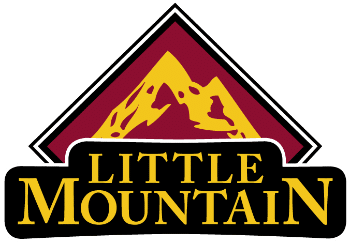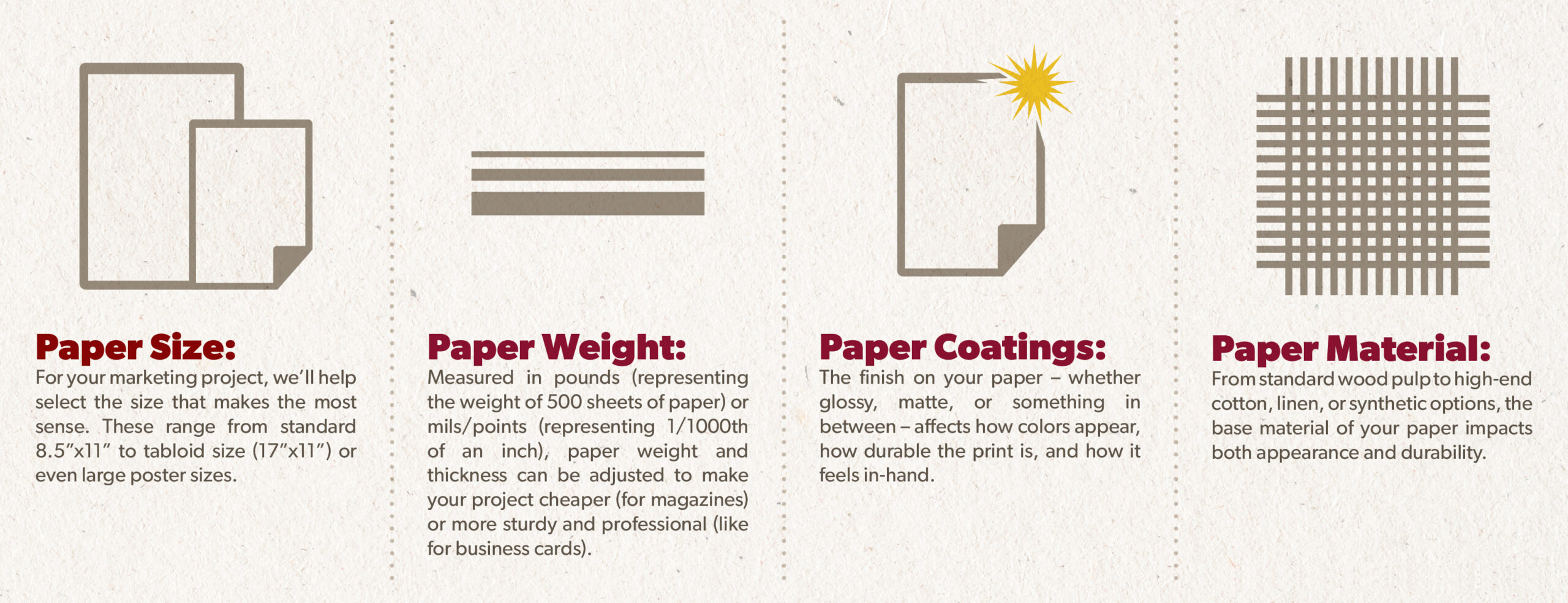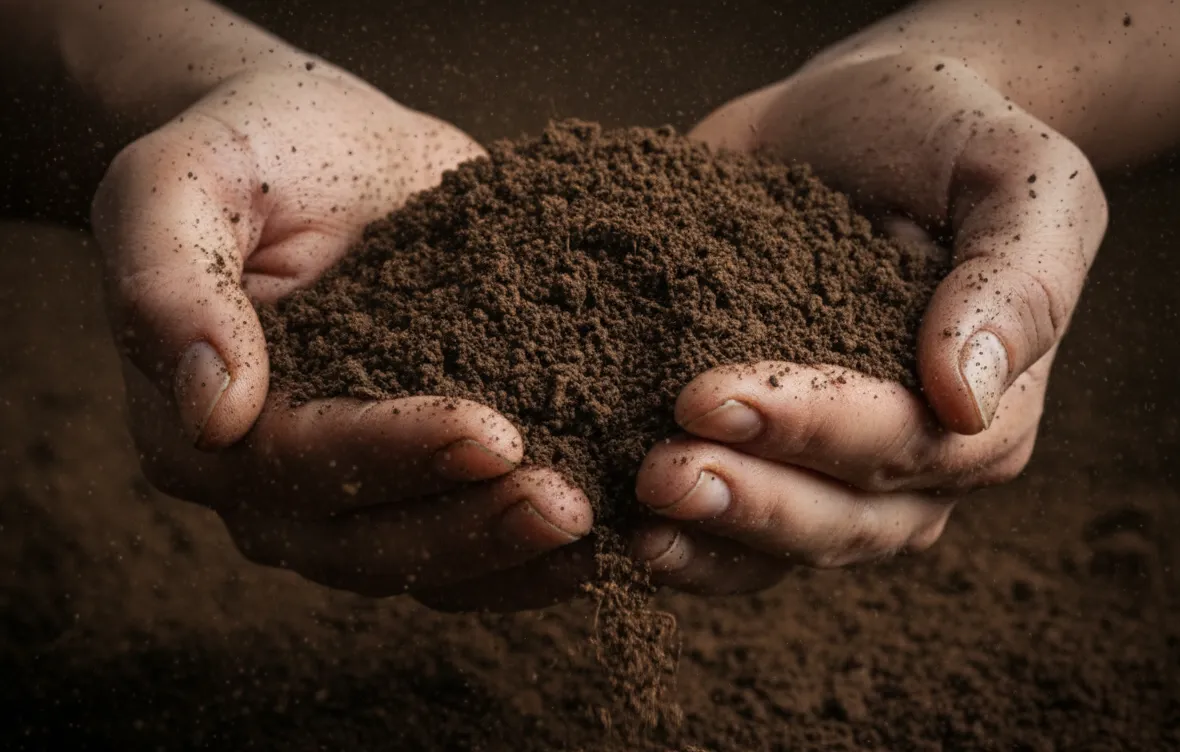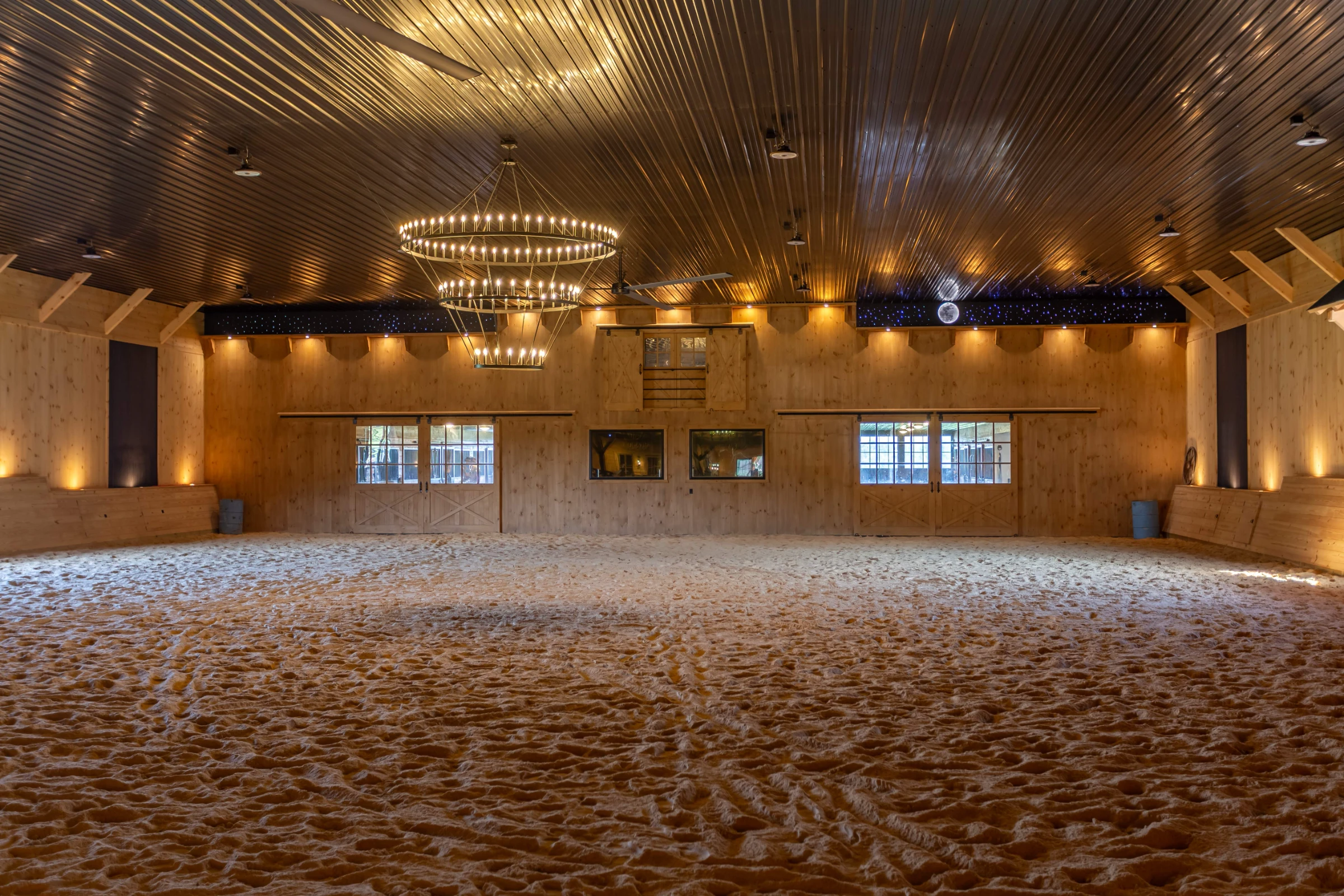When it comes to printing documents, catalogs, or any other promotional materials, ink is your paint, and printing paper is the canvas! Selecting the right paper for your print job should be towards the top of your to-do list, a choice that can make colors pop, text crisp, and your entire project look more professional (or artsy, elegant, luxurious – whatever vibe you’re going for).
As a full-time printing company, these decisions are second-nature to us, but customers like you don’t always know the difference between 20-pound and 28-pound paper. In this guide, we’ll simplify paper types, paper weight, and types of paper for printing without getting too far into the weeds.
Here’s the TL;DR (Too Long; Didn’t Read) on types of paper for printing, and key terminology.
Key Takeaways
- The key terms you need to know are: 1) paper size; 2) paper weight (thickness and heaviness); 3) paper coatings; and 4) paper material (less important). That’s it.
- When you work with LMP, we help you sort out the details, showing you examples to help match your printing project to your budget, goals, and the look/feel of your business.
The Only Four Everyday Printing Paper Terms You Need To Know

Paper Size
When it comes to printing, you don’t need to memorize a million sizes. Just knowing the three most common will cover most jobs. As a custom print shop in Lebanon serving greater Lancaster and Central PA, we deal with MANY paper sizes that the average person will never see, and our job as your service provider is to help you navigate the paper size based on the project. For instance, most brochures are standard letter size paper.
1. Standard Letter Size (8.5″ x 11″)
This is your go-to size for just about anything: office documents, invoices, school papers, and even most brochures or flyers. If you’ve ever hit “print” on a home or office printer, this is probably what came out.
- Very nearly the international standard A4 size (8.3″x11.7″) but not quite!
2. Legal Size (8.5″ x 14″)
A little longer than standard letter size, this is mainly used for contracts, legal documents, and forms that need extra space. If you’ve ever seen a stack of paperwork or closed on a home purchase at a lawyer’s office, odds are it was printed on legal-size paper.
3. Tabloid / Ledger Size (11″ x 17″)
Twice the size of standard letter and mostly used for posters, menus, catalogs, and booklets.
A-Series Sizes: Standardized, But Not American
If you’ve ever seen “A4” or “A3” on a document and wondered what it meant, this is the international standard for paper sizes. Unlike the U.S. system (Letter, Legal, Tabloid), the A-series follows a mathematical structure based on a simple rule: each size is exactly half the size of the one before it when cut in half lengthwise.
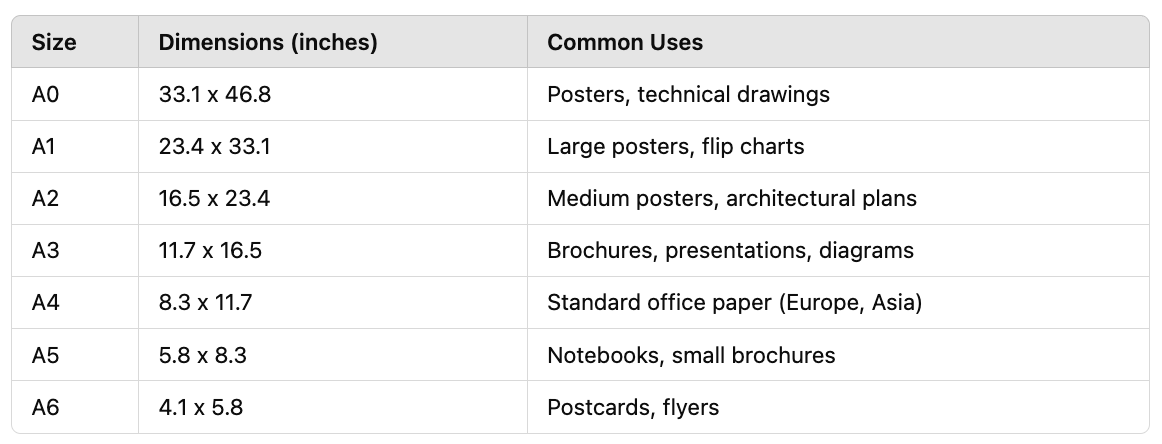
Paper Weight & Thickness
Ever printed a flyer that felt too flimsy, and maybe even cheap? That’s paper weight.
Paper weight is measured in pounds (lb or #) based on 500 sheets (a “ream”) of paper. It’s not quite the same as paper thickness, but the two do go hand-in-hand. The three main types of paper for printing include:
1. Basic Bond Paper (20lb – 32lb)
- This is your standard office printer paper. Lightweight, inexpensive, and easy to write on.
- 20lb: Everyday copy paper.
- 24lb – 28lb: Provides a premium feel, better for letterheads and presentations.
2. Text (50lb – 100lb)
- Found in brochures, flyers, and magazine pages. Feels smoother and more substantial.
- 70lb – 80lb:Typical for high-quality flyers and brochures.
- 100lb: Thicker and ideal for premium booklets and catalogs.
Cover (80lb – 130lb)
- Stiff and durable, used for business cards, postcards, and book covers.
- 80lb – 100lb: Good for greeting cards and booklet covers.
- 120lb – 130lb: Very thick, perfect for premium business cards and packaging.
While weight is a common measurement tool for standard printer paper and beyond, you may also see references to paper thickness. Paper thickness (sometimes called caliper) is the actual measured thickness of a single sheet, usually expressed in thousandths of an inch (mils or points).
Paper Thickness or Paper Weight Examples
Standard Printer Paper (20lb Bond Paper)
- Thickness: 4 mils (0.004 inches)
- Feels lightweight, flexible, and easy to fold.
Premium Business Card Paper (100lb -150lb Cover Stock)
- Thickness: 16–32 mils (0.016–0.032 inches)
- Feels thick and rigid – premium business cards can be 5-10x thicker than standard printer paper. Can be nearly as thick as a credit card.
Paper Coatings
The finish on the surface of your paper makes a huge difference in how your final print looks and feels, whether you want a high-gloss shine like a catalog, a smooth matte, or something with a little texture.
Coated paper has a smooth, treated surface that improves color vibrancy and detail. This can be great for brochures, magazines or catalogs, and posters.
Uncoated paper is more absorbent and natural-feeling, with a soft texture. This is best for business stationery, books, and forms where you need to write on the page. Standard printer paper is uncoated.
The core types of paper coatings are:
1. Gloss Coatings
- High shine and smooth texture that makes colors look vibrant and sharp.
- Gloss coated paper is used for brochures, posters, magazines, and high-quality images.
2. Matte Coatings
- Soft, non-reflective finish that gives a refined, elegant look. Reduces glare, making text easier to read.
- Used for premium business cards, book covers, and more upscale branding or catalogs.
3. UV Coatings
- This extra-thick, high-gloss layer adds durability and resists scratches, moisture, and fading. It is so glossy it’s hard to write on.
- Used for postcards, business cards, and other covers needing extra protection.
4. Everything In Between
- There are a range of glossy paper and matte paper alternatives along this spectrum if you’re looking for middle ground, including soft-touch and aqueous coatings. If you’re curious, just ask and we can show you some samples! As a longtime printing company serving Lancaster and beyond, we keep it all on-hand, from matte coated paper through high gloss paper!
Paper Materials
Ever wondered what your paper is actually made from (besides the obvious – wood)? Beyond weight, thickness, and coatings, the actual material your paper is made from plays a big role in its feel, durability, and use. Different paper materials are designed for different types of projects.
1. Standard Wood Pulp Paper
- Made from traditional wood fibers, this is what most common printing paper is made of.
- Best for: Office documents, flyers, standard business printing.
- Pros: Affordable, widely available.
- Cons: Can yellow over time, not as durable as other options.
2. Recycled Paper
- Made from post-consumer or post-industrial recycled content.
- Best for: Businesses looking for sustainable printing solutions.
- Pros: Reduces environmental impact, available in many finishes.
- Cons: May have a slightly rougher texture, not always as bright white as standard paper.
3. Cotton Paper
- Contains cotton fibers, giving it a soft, high-quality feel.
- Best for: Business stationery, wedding invitations, archival documents.
- Pros: Durable, rich texture, resists yellowing.
- Cons: More expensive than wood pulp paper.
4. Linen & Laid Paper
- Features fine patterns that add a tactile, high-end feel.
- Best for: Business cards, letterheads, luxury print materials.
- Pros: Distinctive texture, adds elegance to printed materials.
- Cons: Can be harder to print on due to textured surface.
5. Synthetic Paper
- Made from plastic-based materials rather than wood fibers.
- Best for: Menus, outdoor signage, waterproof maps.
- Pros: Resists water, tearing, and wear.
- Cons: More expensive, less environmentally-friendly than natural papers.
The Extraneous Paper Types To Know
What about the less common but still common-enough paper types you see at the store or online?
- Inkjet Paper: Designed for inkjet printers, this paper absorbs ink quickly to prevent smudging. Available in standard, glossy, and matte finishes, it’s good for home and office printing with rich color output.
- Laser Printer Paper: Optimized for laser printers, this paper better withstands high heat and toner application.
- Photo Paper: A glossy or semi-glossy paper designed for high-quality photo printing. Available in different thicknesses, it produces great image quality for personal or professional photography.
- Newsprint Paper: A lightweight, uncoated paper used for newspapers and flyers. It’s inexpensive but prone to yellowing and tearing over time.
Final Thoughts On Types of Paper For Your Promotional Materials
From weight and thickness to coatings and material, every choice you make influences how your print project turns out. But what do you REALLY need to know? Size, weight, and coating are probably all you’ll ever discuss with your print shop, but the choices really are boundless.
Our goal is to make your choices easier. Whether you already know exactly what you need, or you’re looking for helpful guidance and even graphic design services, our team is ready to help you choose the perfect paper for your project. Reach out today and let’s talk print!
